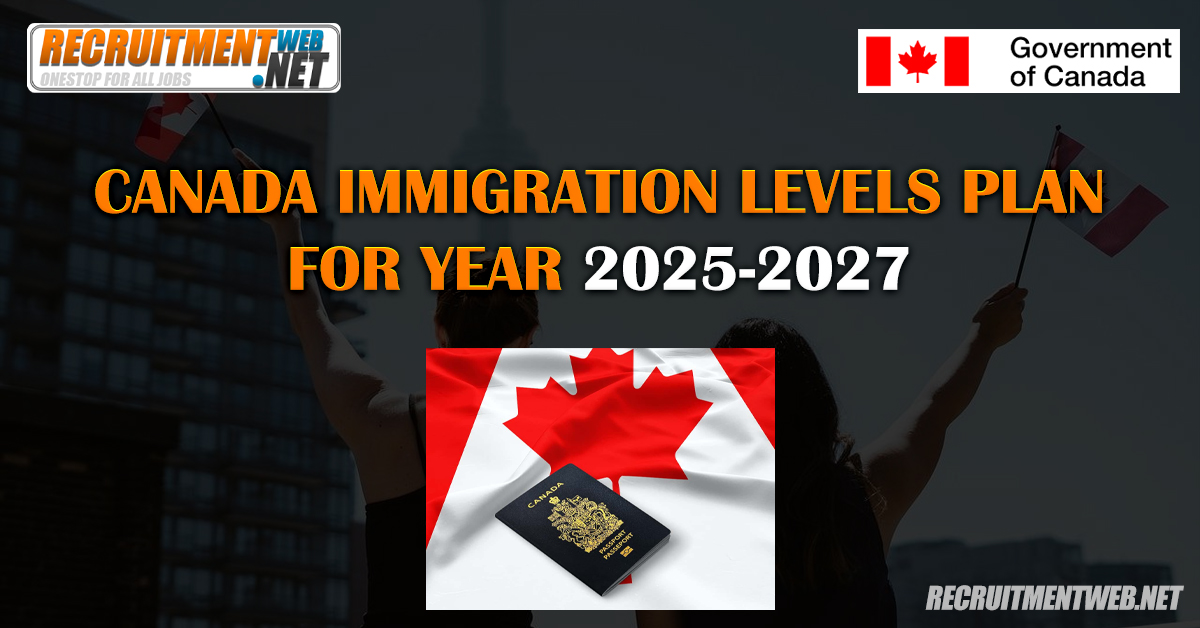Overview of Canada’s Immigration Levels Plan for 2025-2027
The Immigration Levels Plan for 2025-2027 sets goals to manage population and support economic growth. The plan adjusts the number of permanent resident admissions to balance various needs.
Key Immigration Targets and Annual Quotas
For 2025, the target is 395,000 new permanent residents, reducing to 380,000 in 2026 and 365,000 by 2027. These targets aim to balance resources like housing and healthcare. Around 40% of admissions in 2025 will be students and workers already in Canada, focusing on sustainable growth while aligning with the country’s capacity.
Permanent Resident Admissions Strategy
The strategy focuses on economic immigrants to support GDP growth. In 2025, Canada plans to welcome 232,150 economic immigrants, targeting skills that bolster the job market. The Provincial Nominee Program has significant adjustments, reflecting regional priorities and supporting smooth integration of newcomers.

Canada Immigration Levels Plan Eligibility and Immigration Programs
The 2025-2027 Immigration Levels Plan includes changes in eligibility and various immigration pathways, covering programs for economic immigrants, federal and provincial nominees, and family reunification.
Federal and Provincial Nominee Programs
The Provincial Nominee Program (PNP) allows provinces to nominate individuals meeting specific local job market needs. Federal programs, such as Express Entry, include economic immigration programs like the Federal Skilled Worker Program and the Canadian Experience Class.
Economic Immigration and Skilled Workers
Economic immigration targets skilled workers essential to Canada’s growth. Programs like the Federal Skilled Worker Program require work experience, education, and language proficiency. Candidates with job offers or current temporary work status in Canada have an advantage in this category.
Francophone Immigration Initiatives
To support linguistic diversity, Canada encourages francophone immigration outside Quebec through programs like the Francophone Mobility Program, which facilitates temporary work permits for French-speaking applicants aiming to strengthen French-speaking communities.
Family Reunification Rules
Family reunification remains a key priority, with programs like the Family Class Sponsorship for sponsoring family members. Changes include faster processing times and expanding the super visa program, allowing extended visits for parents and grandparents.
Canada Immigration Levels Plan Temporary Residents and International Mobility
Temporary residents, including international students and foreign workers, play a vital role in Canada’s economy. Work and study permits help manage their flow, supporting economic growth and sustainability.
Work and Study Permit Regulations
Post-Graduation Work Permits (PGWP) allow international students to work after their studies, gaining Canadian work experience. Applying for permits early is recommended as processing times vary.
Temporary Foreign Worker and International Student Programs
The Temporary Foreign Worker Program (TFWP) and International Mobility Program support labor market needs. TFWP fills labor gaps, while the International Mobility Program offers work permits exempt from labor market impact assessments.
Canada Immigration Levels Plan Socio-Economic Impact and Labor Market Needs
The 2025-2027 Immigration Levels Plan addresses economic and social issues like housing affordability and labor shortages to balance population growth with infrastructure and service capacities.
Addressing Housing and Growth Challenges
Canada anticipates a slight population decline in 2025 and 2026, followed by growth in 2027, to ease housing supply gaps. By 2027, the goal is to add 670,000 housing units, helping to mitigate cost pressures and improve housing affordability.
Support for Key Labor Market Sectors
Economic immigration will make up 62% of admissions by 2027, addressing shortages in healthcare, technology, manufacturing, and services. This targeted approach aims to fill labor gaps, positively impacting GDP and employment rates.
Canada Immigration Levels Plan Protection and Integration of Refugees
Canada’s refugee strategy involves setting specific targets for refugee admissions and offering integration support, particularly in Francophone areas.
Refugee and Protected Person Admissions
Canada’s immigration strategy includes humanitarian efforts, aiming to admit individuals fleeing persecution and family members. By 2025, permanent resident targets for this group are set to ensure fairness and timely processing.
Community and Francophone Integration Support
Programs provide language training, employment assistance, and cultural orientation to help refugees integrate into Canadian society. Francophone communities, especially in Atlantic Canada, receive tailored support through initiatives like the Atlantic Immigration Program to foster a sense of belonging and ensure successful adaptation.
Frequently Asked Questions
What are the updated immigration targets for Canada in 2025-2027?
Canada plans to welcome 395,000 new permanent residents in 2025, decreasing to 380,000 in 2026 and 365,000 in 2027. This approach prioritizes quality immigration and efficient population growth management.
How will the new rules impact Canada’s immigration process in 2025?
The updated rules focus on sustainability, emphasizing applicants with stronger Canadian connections. Expect changes in processing times and criteria, aiming for a smoother experience for prospective immigrants.
What are the eligibility criteria for the Canada Immigration Levels Plan for 2025-2027?
Eligibility criteria emphasize skills and Canadian connections, favoring candidates with local experience or family ties. The goal is to integrate newcomers who contribute positively to society and the economy.
What changes have been made to regional immigration pathways for 2025?
Regional pathways will undergo targeted adjustments to support local labor markets, particularly in provinces needing specific skills and population growth, distributing newcomers across regions beyond major urban centers.
How does the IRCC plan to manage increased immigration levels in the coming years?
IRCC aims to enhance processing efficiency and adopt updated technology, balancing admissions with service capacity like housing and employment resources.
Are there specific industries or sectors targeted by the Canada Immigration Plan for 2025-2027?
Yes, the plan targets sectors with skill shortages, including technology, healthcare, and trades, to support economic growth and workforce gaps.


